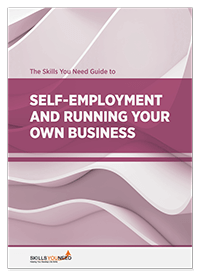5 Grammar and Stylistic Skills You Need
to Write an Outstanding Resume
See also: Writing a CV or Resume
Having a well-written resume or CV is key to getting the dream job that you are looking for. It lets the hiring manager know who you are, what you can do, and where you are capable of growing.
Having a resume that is full of grammar errors is a huge turn-off to those hiring managers so it’s important to make sure that your resume looks sparkling clean before submitting it.
With the right grammar and stylistic skills, you can make sure that your resume stands out amongst the crowd.

What Skills Do You Have?
When a hiring manager looks at your resume, they are sure to read over the skills section. What is a skills section? Well, a skills section is a portion of your resume that lists off all the appealing skills that you possess.
This is where you would include any experience with different programs (such as Microsoft Excel,) skills related to hobbies, and any other skills that would make sense for the job you are trying to apply to. It is usually formatted as a list in a side column to not take up too much page space.
If you have no idea what skills you should include, there is a selection of skills that are commonly wanted across several work fields. Skills You Need shares different skills across several different topic areas that you can include on your resume. Not only are there skills that you need for life, but there are also skills that you need for your resume.
Be Concise
A hiring manager doesn’t want to sit down and read a lengthy 4-page resume. While you may have many achievements, they don’t all need to be listed on your resume. Be concise with what you include and what you say about each thing.
Include the projects, skills, and education that relates to the job that you are trying to get. If you are trying to get a coding job, then maybe it’s not the right time to include the art skills you developed a few years ago.
If you are unsure whether you are being concise, read over your work and decide if everything you added is 100% needed information. Don’t ramble on in your explanations, instead, get to the point, write in plain English and show what you know.
There are websites and programs online that can read over your resume and see if it is concise or not. Grammarly is a great tool to check for conciseness.
Use a Template
Figuring out the perfect way to format your resume can be tough. It’s hard to know exactly what a hiring manager will want and how to keep all your information balanced. An easy way to have a resume formatted in a way that will be pleasing to any hiring manager is by using a template.
Sure, there are some templates out on the internet that aren't good at all. Those templates usually use many bright colors and infographics that distract the hiring manager from getting to the real information. However, there are some great templates online that can help your chances of being chosen for the job.
Look for a job resume template that is HR-approved. They are simple with all the important information right at the top of the visual pyramid.
Choosing the right template can still feel daunting, but it still takes a lot of pressure off you in figuring out how to properly format a resume. Choose a job resume template that best shows off your work or one that you feel would fit the style of the job you are applying for.
For example, if you are applying to work for a brand-new company that values the modern lifestyle and values, then choosing a modern styled template would be the way to go.
Proofread
Proofreading is an extremely important part of the job resume writing process. Even if you used a template, you have still written your pieces on the resume that must be looked over. A resume littered with grammar and spelling errors is not likely to be picked among resumes that have been proofread.
You can have a friend, colleague, or family member look over your resume to check for any errors. Or, if you want to go the technological route, you can use online proofreaders to check your resume.
It isn’t recommended to only look over it again once with your own eyes as you can easily miss errors. Writers can become “error-blind” to their work and that may well happen when you are looking over your resume.
Getting your resume proofread by several sources is a sure way to catch any errors that may be present. The rule of thumb is to proofread your resume three times before sending it to the hiring manager. Get your job resume noticed by making sure it is completely free of errors.
Mention the Most Important Facts First
Have you ever been told to lead with your strongest argument? Well, that applies to resume writing too. Whether you are making your own resume or using a template, make sure to lead with your strongest skills, projects, and other pieces of information.
Putting the most relevant knowledge and experience at the top guarantees that the hiring manager will read the most important information. If a hiring manager is going to skim anything, it’s going to be the droning end.
The strongest stuff usually includes your best work that correlates with the job that you are trying to get. If you are trying to get a coding job, you would have all the coding languages you know first in your skills section and any other coding projects that you have made first in your projects section.
After the strongest information, you can include other relevant but not as pressing facts such as organizational skills, strong communication skills, etc.
If you implement these grammar and style skills into your job resume or CV, then you are sure to get the job that you want.
Further Reading from Skills You Need
The Skills You Need Guide to Getting a Job
Develop the skills you need to get that job.
This eBook is essential reading for potential job-seekers. Not only does it cover identifying your skills but also the mechanics of applying for a job, writing a CV or resume and attending interviews.
About the Author
Cristina Par is a content specialist with a passion for writing articles that bridge the gap between brands and their audiences. She believes that high-quality content plus the right link building strategies can turn the tables for businesses small and large.


